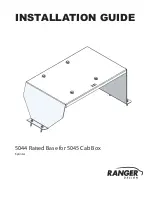
R
the road type changes (e.g. motorway,
country road).
R
you have travelled a certain minimum
distance without the road sign being
repeated or detected again.
Blind Spot Assist
Important safety guidelines
Blind Spot Assist uses a radar sensor system
to monitor the areas on both sides of your
vehicle. Blind Spot Assist provides assistance
at speeds higher than 30 km/h. A warning
display in the exterior mirrors draws your
attention to vehicles in the monitored area. If
you then indicate a turn towards that side
before changing lane, you will also receive
visual and audible collision warnings. For this
purpose, Blind Spot Assist uses sensors in the
rear bumper.
G
Risk of accident
Blind Spot Assist is only an aid designed to
assist driving. It may fail to detect some vehi-
cles and is no substitute for attentive driving.
Blind Spot Assist cannot detect road and traf-
fic conditions. It may fail to detect narrow
vehicles, such as motorcycles or bicycles, or
only detect them too late.
Monitoring may be affected by dirty sensors,
strong spray or poor visibility caused by snow,
rain or mist, for example. In this case, vehicles
are detected late or not at all.
Always pay attention to traffic conditions and
your surroundings. Otherwise, you may fail to
recognise dangers in time, cause an accident
and injure yourself and others.
The radar sensor system is automatically
deactivated near radio telescope facilities
(
Y
page 324).
For Blind Spot Assist to assist you when driv-
ing, the radar sensor system must be activa-
ted (
Y
page 208) and operational.
Monitoring range of the sensors
Blind Spot Assist monitors the area up to
three metres behind your vehicle and directly
next to your vehicle as shown in the diagram.
Side view, Coupé (example)
G
Risk of accident
Blind Spot Assist monitors certain areas in the
immediate vicinity of your vehicle. Vehicles
that approach and drive past at high speeds
are not detected. There is no display and no
warning.
If the lanes are very wide, it may not be pos-
sible to monitor the complete width of the
neighbouring lane. For this reason, vehicles in
the next lane may not be detected, especially
if they are driving in a staggered formation in
different lanes. This may be the case if vehi-
cles are driving at the edge of their lane that
is furthest away from your vehicle.
Always pay attention to traffic conditions and
your surroundings. Otherwise, you may fail to
recognise dangers in time, cause an accident
and injure yourself and others.
If the lanes are narrow, the system may be
unable to distinguish the neighbouring lane
from the one beyond it. For this reason, vehi-
cles in the farther lane may be indicated,
especially if the vehicles are driving in a stag-
gered formation in different lanes. In particu-
184
Driving systems
Driv
ing
and
par
king
BA 207 ECE ÄJ 2010/1a; 1; 2, en-GB
mkalafa
Version: 3.0.2.11
2010-01-26T13:03:22+01:00 - Seite 184
Содержание E-Class 2010
Страница 2: ......
Страница 3: ......
Страница 5: ...BA 207 ECE ÄJ 2010 1a 1 2 en GB mkalafa Version 3 0 2 11 2010 01 26T13 03 22 01 00 Seite 2 ...
Страница 67: ...64 BA 207 ECE ÄJ 2010 1a 1 2 en GB mkalafa Version 3 0 2 11 2010 01 26T13 03 22 01 00 Seite 64 ...
Страница 93: ...90 BA 207 ECE ÄJ 2010 1a 1 2 en GB mkalafa Version 3 0 2 11 2010 01 26T13 03 22 01 00 Seite 90 ...
Страница 121: ...118 BA 207 ECE ÄJ 2010 1a 1 2 en GB mkalafa Version 3 0 2 11 2010 01 26T13 03 22 01 00 Seite 118 ...
Страница 135: ...132 BA 207 ECE ÄJ 2010 1a 1 2 en GB mkalafa Version 3 0 2 11 2010 01 26T13 03 22 01 00 Seite 132 ...
Страница 259: ...256 BA 207 ECE ÄJ 2010 1a 1 2 en GB mkalafa Version 3 0 2 11 2010 01 26T13 03 22 01 00 Seite 256 ...
Страница 299: ...296 BA 207 ECE ÄJ 2010 1a 1 2 en GB mkalafa Version 3 0 2 11 2010 01 26T13 03 22 01 00 Seite 296 ...
Страница 311: ...308 BA 207 ECE ÄJ 2010 1a 1 2 en GB mkalafa Version 3 0 2 11 2010 01 26T13 03 22 01 00 Seite 308 ...
Страница 331: ...328 BA 207 ECE ÄJ 2010 1a 1 2 en GB mkalafa Version 3 0 2 11 2010 01 26T13 03 22 01 00 Seite 328 ...
Страница 332: ......
Страница 333: ......
















































